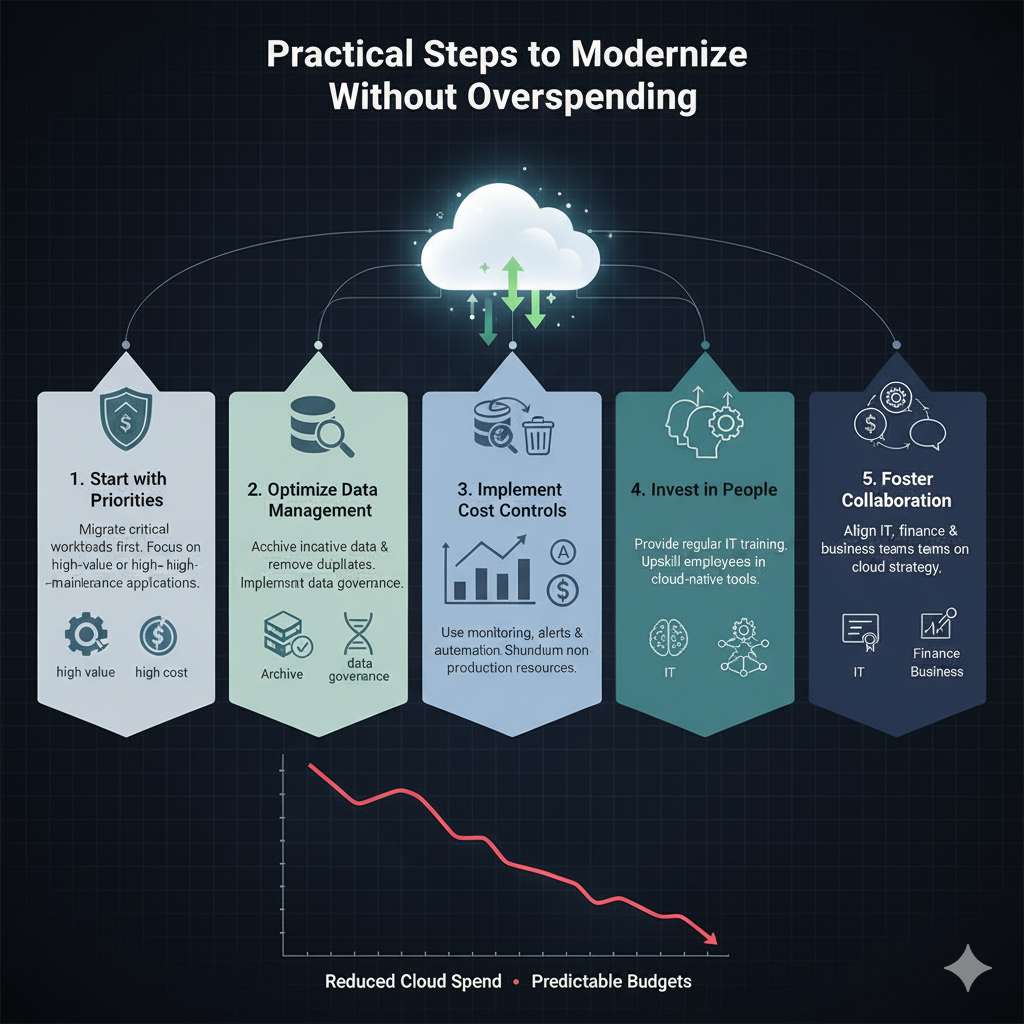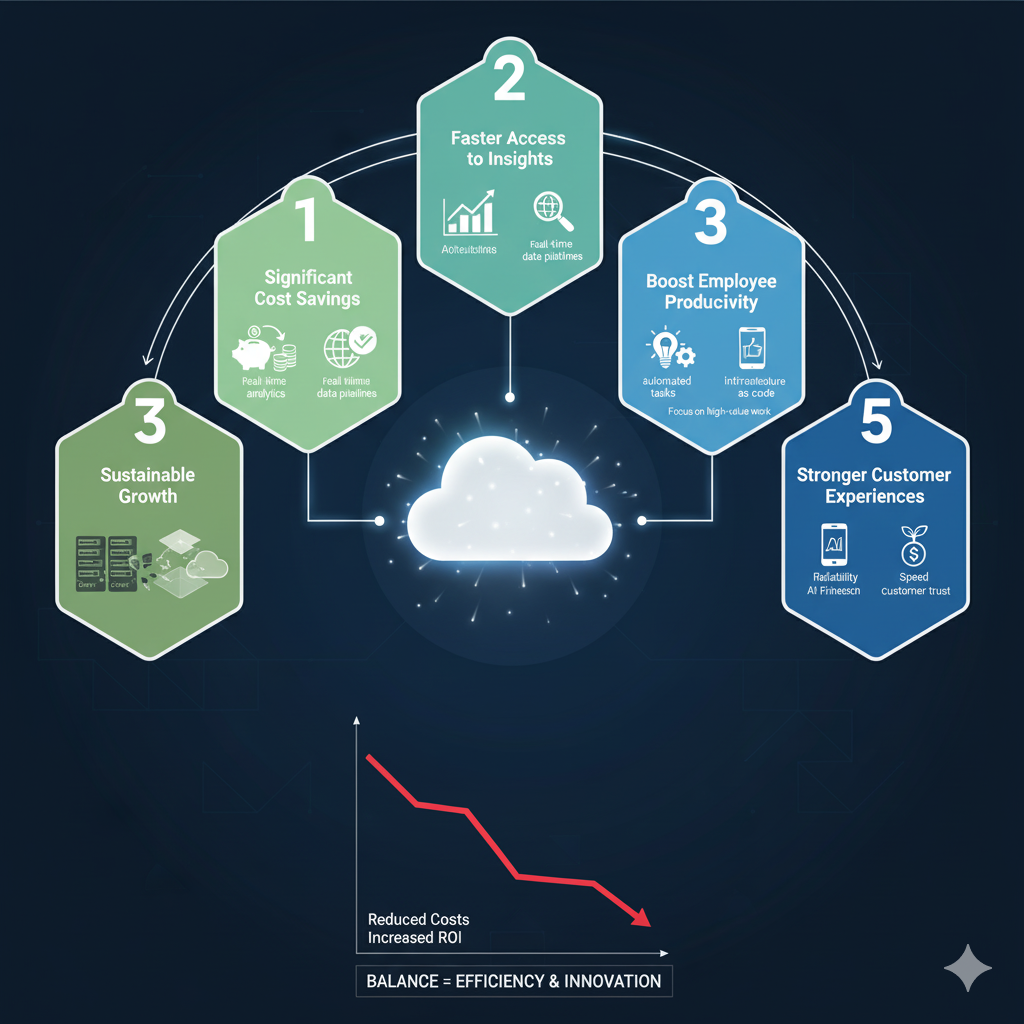Many financial institutions are caught between two challenges: outdated IT systems that slow down cloud migration and rising cloud costs from unmanaged usage. These issues not only delay innovation but also impact profitability for the business and customer trust due to poor experiences.
This article explores practical ways for businesses to modernize technology for their operations while keeping costs under control.
How legacy systems delay cloud migration:
The Effect Of Old Legacy Systems
- Older infrastructure often lacks compatibility with modern cloud platforms. Many legacy systems rely on outdated APIs, unsupported software, or proprietary architectures that do not integrate easily with cloud-based services. According to Superblocks, 88% of organizations say legacy technology is holding them back.
- Migration projects take longer due to complex integrations and testing. Organizations spend time reworking dependencies, mapping old system formats, and ensuring that every component works both on-premises and in the cloud.
- IT teams spend excessive time maintaining hardware rather than driving innovation. Maintenance of aging servers, patching unsupported systems, and keeping hardware running account for a very large portion of daily IT effort and budget. For many institutions, this means little time to design new products or improve customer experience.
When cloud costs spiral out of control these happens:
Cloud Migration & Legacy Systems - When cloud costs spiral out of control 
- Overuse of storage and compute resources can quickly inflate budgets: Cloud providers usually charge for compute cycles, storage space, bandwidth, and other extra services. If workloads are not rightsized (properly adjusted) or if storage is overprovisioned (allocated more than needed), costs rise sharply.
- Retaining unused or redundant data leads to unnecessary expenses: Data that is no longer needed, or duplicate copies sitting in multiple places, still incur storage and backup charges and drives up cost.
- Without governance, departments may duplicate resources and drive up costs: Different teams may spin up identical services or environments without coordination. Cloud bills become unpredictable, creating financial strain.
- Many financial firms report difficulty forecasting cloud spend when usage grows, when data spikes, or when tests or non-production environments are left running.
Practical steps to modernize without overspending
Cloud Migration & Legacy Systems - Steps To Modernize
- Start with priorities: Move critical workloads first to show quick wins. Focus on applications or services that either cost the most to maintain or add the most value when migrated. This approach builds momentum and justifies further investment.
- Optimize data management: Archive inactive data and remove duplicates. Instituting strong data governance helps ensure information is stored only where needed and that old or redundant records are regularly cleaned.
- Implement cost controls: Use monitoring tools, alerts, and automation to manage usage. Many cloud platforms offer built-in cost monitoring and automation features. Setting alerts for unexpected resource use or budget overruns helps identify waste early. Automate shutdown of non-production resources when not in use.
- Invest in people: Provide employees with regular IT training to use cloud resources efficiently. Skill gaps are a common barrier in handling new cloud systems; experienced employees may be experts in older systems but not yet fluent in cloud-native tools, containerization, or cost-management practices.
- Foster collaboration: Align IT, finance, and business teams on a unified cloud strategy. When stakeholders understand cost drivers, goals, and risks, decisions on workloads, resources, and policies are more informed and sustainable.
Long-term benefits of balance
Cloud Migration & Legacy Systems - Long Term Benefits of Modernizing
- Significant cost savings from both reduced infrastructure overhead and optimized cloud use by moving off aging hardware reduces maintenance, energy, and license costs to optimize cloud operations and reduce wasted resources.
2. Faster access to insights that drive better decision-making. Modern systems often make near-real-time analytics possible and improved with agile cloud platforms, data pipelines and reporting.
3. Boost employee productivity by cutting down repetitive IT tasks. With automated provisioning, infrastructure as code, and managed services, IT teams can focus on higher value work instead of manual operations.
4. Stronger customer experiences through reliability and speed. Fewer outages, faster updates, and scalable systems create consistent service, better digital products, and greater trust.
5. Sustainable growth fueled by efficiency and innovation. Instead of battling rising costs or legacy debt, institutions can channel savings into fintech partnerships, AI, and customer-focused tools.
Conclusion
Cloud success isn’t about rushing adoption or overspending on resources. It’s about intentional, well-paced modernization grounded in cost discipline and collaboration. By combining smart upgrades with efficient cloud practices, financial firms can cut costs, deliver better services, and stay competitive in a market that’s constantly evolving.
Schedule Your Consultation
Ready to take the next step?
Book a free, 30-minute consultation with our experts today at Cognetiks Consulting on how to conduct a secure and cost-effective cloud migration for your business.
Schedule your consultation here: Consultation With Cognetiks